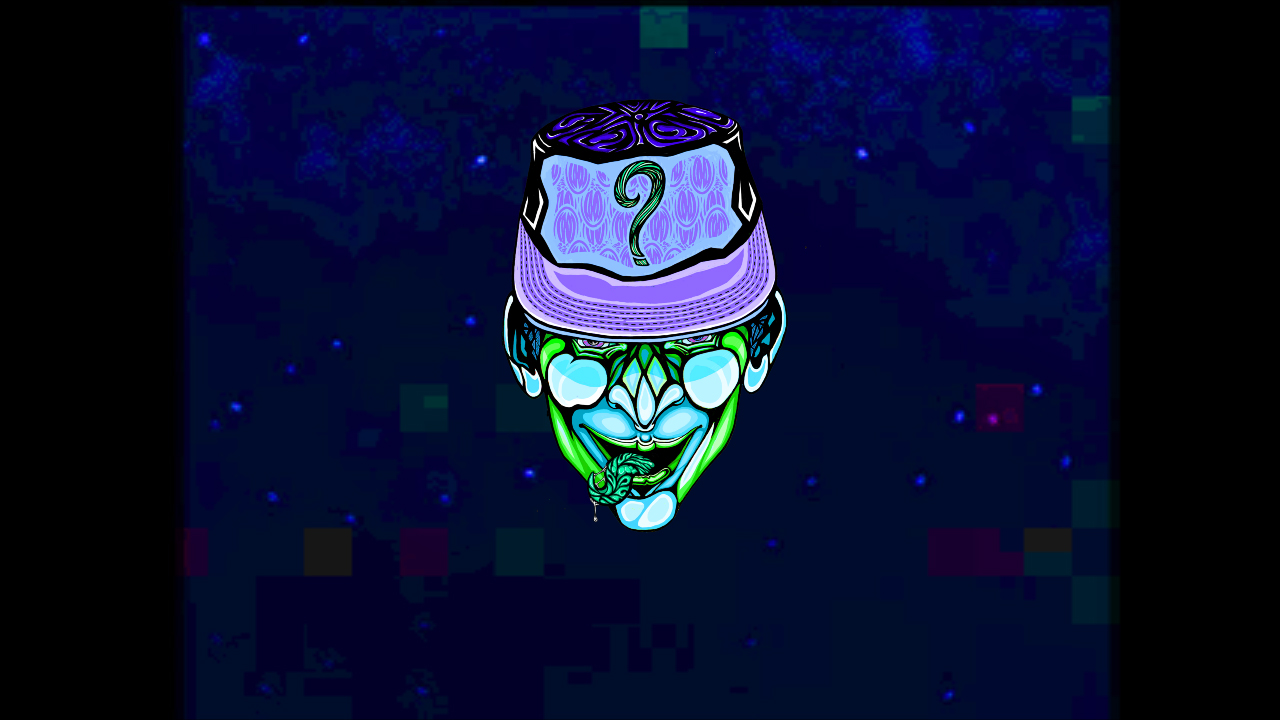Brain MRIs often incite feelings of suffocation, claustrophobia, and panic attacks. But not for Tom Tyrrell (pronounced ti-rul). He finds the crescendo and decrescendo of the thumping, knocking, and clicking noises to be calming. When the machines still scan for the two remaining AVMs in his fragile brain, first attacked by a bleed 12 years ago, the sharp sounds soothe him, and he peacefully dozes off every time. The pulses created by the powerful magnets inside the tube remind Tom of a metronome's consistent tick. And for Tom, who now battles his AVM demons through producing music and short films via his rapper alter ego, Ridlaa, the beats of the machine are music to his ears.
When the Editor in Chief of TAAF Talk Magazine asked me to interview Tom, AKA Ridlaa, I initially thought she had a screw loose. (No pun intended for those of us with screws holding our skulls together from craniotomies.) As an AVM survivor who struggles with a hearing deficit despite wearing double hearing aids raised to their highest volume, I was sure that I would never be able to understand the words of a Brit in a conversation over Facetime. Worse, I feared that I wouldn’t connect with Tom on a personal or professional basis. He's a millennial rapper and beatmaker who grew up listening to hip hop at skate parks in Birmingham, England; I'm a 40-something-year-old mom with a background in finance. I worried we'd just stare awkwardly at one another through our screens while I scrambled to invent relevant questions to ask him about his AVM. I hypothesized using COVID to break the ice. The world still had that to talk about, right? I felt doomed.
After I pronounced Birmingham like an American, it’s Birming-um by the way (not that Tom corrected me), the interview turned into a casual conversation that quickly evolved into an emotional one, provoking tears from us both as we shared the highs and lows of our AVM journeys. Different and screwed up, but somehow uplifting and hopeful, it turned out that the soccer mom and skater guy had a real connection after all. Tom's AVM journey was one of confrontation, turning his pain into art.
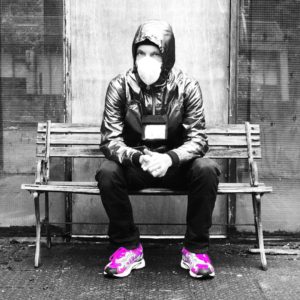 At 20 years old, as Tom navigated university, he planned a trip with friends to Barcelona. On the departing flight, he felt his head pop. Tom carried on with the holiday feeling unwell, unsure of that pop in the middle of his forehead. One week later, he had a convulsive seizure over the toilet, unleashing the catalyst of that pop, a burst AVM.
At 20 years old, as Tom navigated university, he planned a trip with friends to Barcelona. On the departing flight, he felt his head pop. Tom carried on with the holiday feeling unwell, unsure of that pop in the middle of his forehead. One week later, he had a convulsive seizure over the toilet, unleashing the catalyst of that pop, a burst AVM.
At the time of the seizure, Tom was back in the UK, near a hospital where doctors knew of AVMs (an unguaranteed circumstance due to the rarity of AVMs). His doctors identified one ruptured AVM, along with two additional unruptured AVMs, which formed a cluster. The doctors determined a treatment plan for Tom, gamma knife, a form of stereotactic radiosurgery. Call it a blessing from a higher power, an alignment of the stars, or even just luck; whatever it was, Tom remains grateful for his proximity to that hospital and for the skilled doctors who devised a credible treatment plan for his AVM.
Later when Tom returned to university, waiting for the gamma rays to obliterate the remaining tangle of blood vessels in his brain, seizures, and consequently depression haunted him. He never knew when he might wake up with a new "devil's horn," a bump on his head, from his uncontrolled seizures. It’s often dangerous for those newly experiencing seizures, and wholly unfair. Tom and I talked about soiling ourselves during our worst epileptic fits, agreeing there’s a terror in forgetting your bathroom training skills mid-seizure, bumping your head on the toilet instead.
Despite his seizures, Tom forged ahead with his schooling, studying visual communications and sound engineering at university. He focused his work on David Lynch and the “Lynchian" form of cinematography--surrealist, characterized by dream imagery and meticulous sound design, which influences Tom's music and films today. And like a scene in a David Lynch movie, a nightmare unfolded for Tom. The side effects of the gamma knife treatment, his epilepsy, the medication, and his depression plagued him. "It was so painful that people could not understand what I was going through," Tom recalls. When he looked in the mirror, Tom saw an alien-like man looking back at him, a man he once knew, now blurred by threats of seizures, brain bleeds, and death. Tom's alien imagery deeply resonated with me. In my own AVM journey, I recall feeling like an "alien-version" of myself for weeks after my hospital stay and then again after my first seizure. Until my talk with Tom, I had never spoken to anyone who used an alien as a self-comparison, and I hoped he didn’t see me cry at that point. 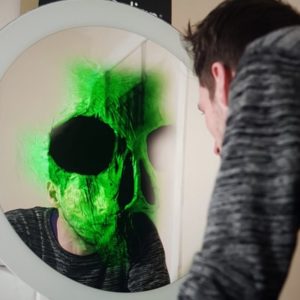
I came to realize that Tom felt no one understood the emotional suffering he faced with his lingering AVMs. As he simultaneously dealt with seizures, medications, doctor visits, and severe anxiety, he turned to music to combat thoughts of suicide, recalling fond memories of listening to hip-hop music as a kid with his friends at the skate parks. He tried to collaborate with other artists. But Tom, in this "new reality," could not remember how to create music and beats that once sparked happiness, especially with bandmates who could not understand his torment. "I forgot how to maintain a happy life. I went through so many emotions, and the journey was so painful."
Tom also wrestled to understand the severity of his condition. At one doctor's visit, he met a thirteen-year-old girl dying from terminal cancer. Another time, he met a gentleman battling a brain tumor. These meetings overwhelmed him. Although Tom can still vividly describe the auras before each seizure as the "buildings collapse around him," and he can still point to the exact spot on his forehead where he felt that initial pop, survivor's guilt further complicated Tom's mental anguish. "I felt that my condition was not important enough. It's just gamma knife, and the image of the girl won't leave my mind." Tom struggled to perceive his brain bleed, the gamma knife treatment, and his debilitating seizures "as important" relative to other conditions. And from physical appearances, his AVM was hidden too, feeding into the "surrealness of the reality of this condition."
When Tom tried medication to cope with his mental deterioration, it caused more seizures, and all he could think of was another brain bleed, and ultimately death. I shuddered and stopped listening. For the first time during the interview I could only think of my own survivor’s guilt. Here I was talking to a man younger than me agonized by his physical and mental ailments. Meanwhile, here I was AVM free and having found the right cocktail of anti-seizure and antidepressant medications to keep my demons (mostly) in check. It didn’t seem fair, and my heart hurt for Tom.
To save himself, Tom returned to music, but with a new focus. He collected vinyls and CDs, worked as a DJ, and used the money he earned crafting beats to purchase a sound system and record the poems he wrote as rap vocals. And this time, Tom focused on himself. He put his mental health at the forefront of his music. Tom discovered that he could tell his story in his way and fight some of the negative feelings he felt towards himself and his AVM journey through producing his rap music. Tom chose Ridlaa as his artist name, a grateful nod to his skateboarding days when he lived happily.
The name Ridlaa also reflects some of the characterizations of his favorite comic book characters. Ridlaa, characterized in green and purple, takes influence from the Joker and Riddler, two of Batman's villains. To Tom, the color green signifies health, and purple symbolizes fantasy, imagery, and dreams. And like the Riddler, who infamously incorporated riddles and puzzles into his schemes in the Batman comic, Ridlaa raps through poems and beats to reveal his true feelings.
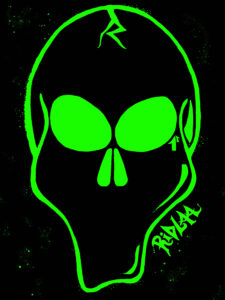 As Ridlaa, Tom now creates the music he wants, which he describes as “underground, industrial, and mechanical.” Ridlaa also says what he wants. At times, the music and films featuring Ridlaa may feel "weird and uncomfortable," but because of their honesty, the effect is actually calming and powerful.
As Ridlaa, Tom now creates the music he wants, which he describes as “underground, industrial, and mechanical.” Ridlaa also says what he wants. At times, the music and films featuring Ridlaa may feel "weird and uncomfortable," but because of their honesty, the effect is actually calming and powerful.
Twelve years have passed since Tom's initial bleed and gamma knife procedure. He’s endured two additional treatments since then, but the two AVMs remain, effectively untreatable. So, as the metronome clicks and the MRI machine pulses, Tom continues to face his journey through his art. He says he wants to share his music and short films with the world to raise awareness and to make a difference in the AVM community, and he hopes other warriors and anyone facing a stressful condition will be inspired to use their creative outlets, like writing, singing, or drawing, to deal with pain and stress as he has.
On June 21, 2020, Ridlaa, will release the short docu-fiction titled "Middle Finger," directed by Conrad Smart, starring Tom as himself and as Ridlaa. I encourage everyone to subscribe to Middle Finger 2020 on YouTube to access the film’s release. The Twin Peaks inspired film is a metaphor about what you probably think, a colloquial "F-U" to all of the things that changed and became difficult in Tom's life because of his AVM. The film highlights the hidden emotion and stress of his condition,and similar to a Lynch film, takes a gradual pace and has no specific end. It's surreal and creates a new reality, all the same.
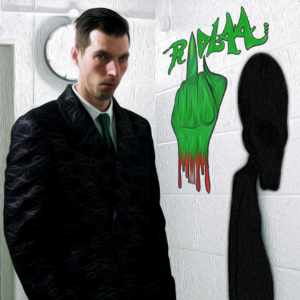
For a sneak peek of the film Middle Finger, please watch the trailer.
Starring: @Ridlaapro
Directed and filmed by: @conrad80s and @smartway_media_solutions
Recorded and mastered by: @priv.otb
Coproduced by: @tyrrellfilms
Looking back on my interview with Tom, I laugh thinking about how I was worried about needing my hearing aids because I didn’t need them. My heart did the listening and his did the talking. And like Tom's good fortune, or blessings, or yes even luck during his initial bleed, I realize that someone is looking out for me too. It's no coincidence that the Editor-in-Chief asked me to interview Tom. We are both aliens; our AVM journeys are intertwined.
We laughed and cried a bit that day, disbelieving that we’d met someone else who understood the uphill struggles of our AVMs, even if just a little. And as we shared, we realized that we are both here for a reason and that there is real POWER in speaking our feelings. While I was initially nervous about interviewing Tom, I am grateful to showcase his bravery and passion. I want to honor him and all of our fellow aliens by helping him raise awareness for the AVM community and for mental health too. As Tom says, "Middle Fingers crossed that we can inspire the world with this film!"
Click the photo to learn more about the author, Vanessa Garza
